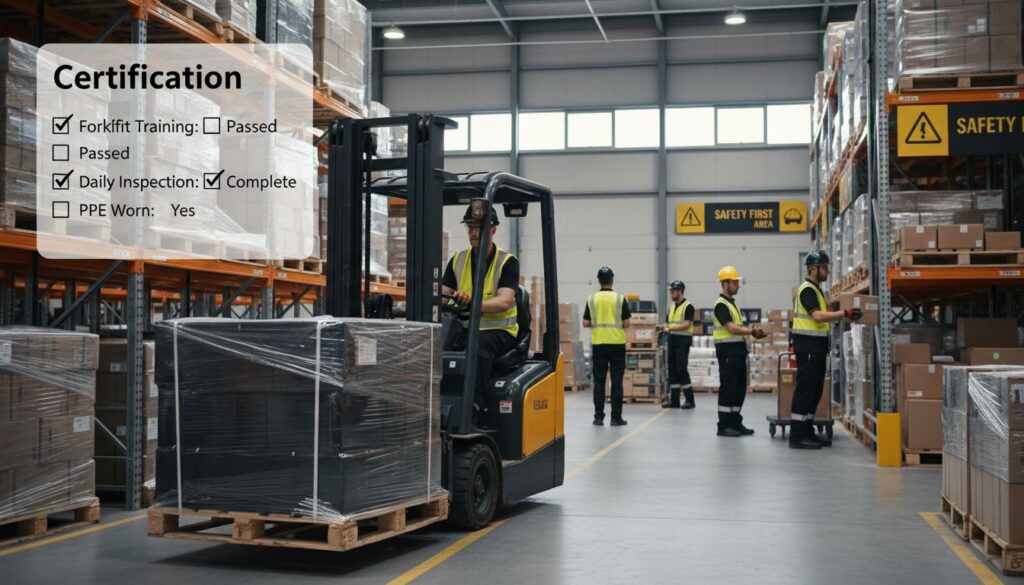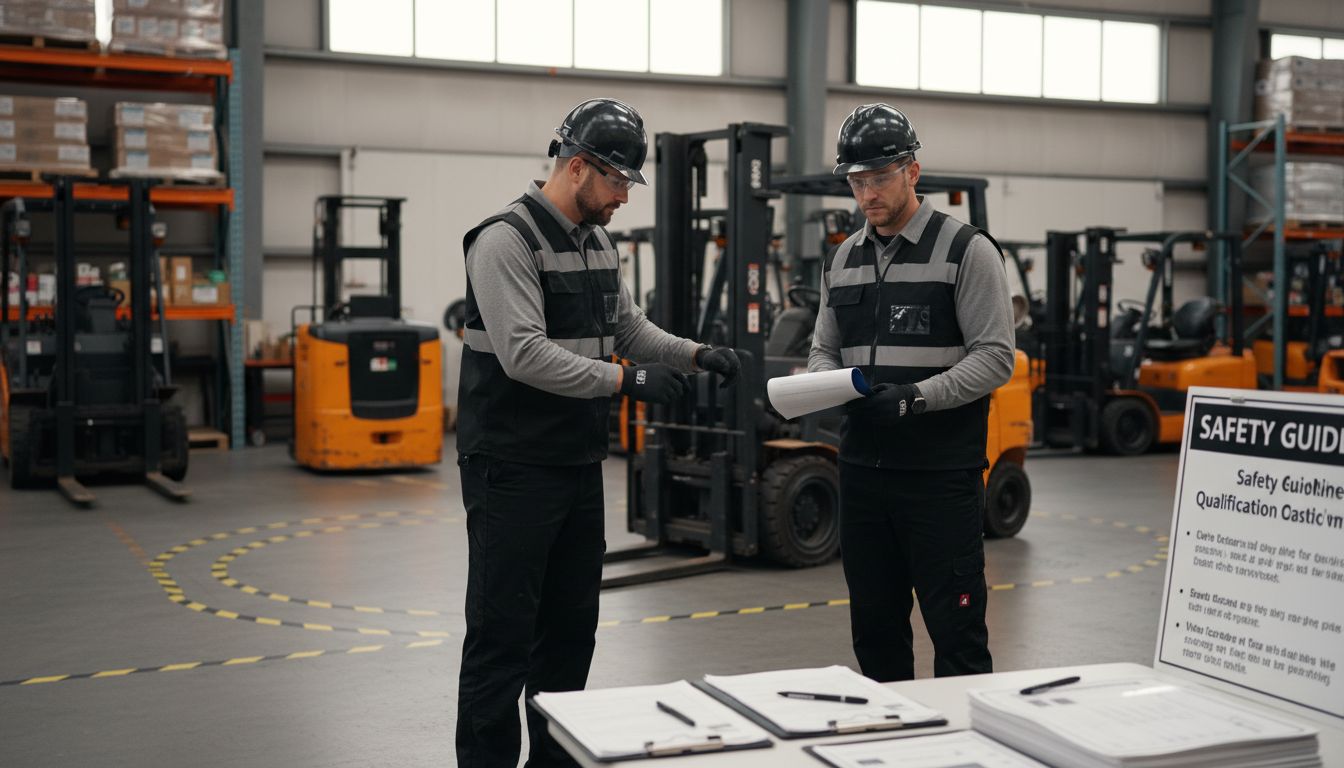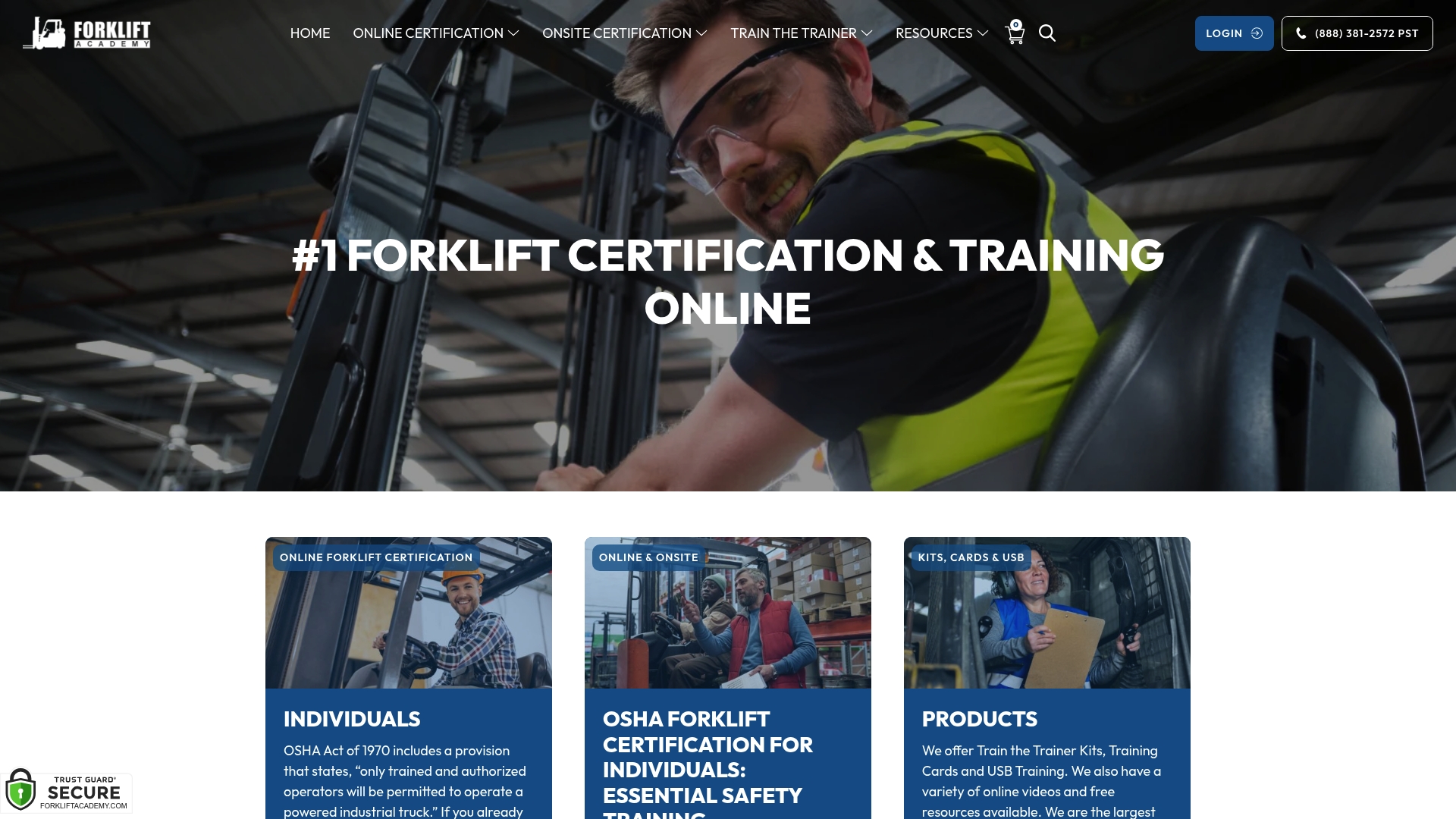
Every year, forklift accidents cause more than 34,000 serious injuries in the United States alone. Handling heavy machinery carries real risks, so certification is not just a formality—it keeps workers safe and businesses protected. Understanding forklift certification means learning about the steps, regulations, and pitfalls that shape both career paths and safety standards in every warehouse and industrial site.
| Point | Details |
|---|---|
| Forklift Certification Importance | Certification validates an operator’s competence in safely managing industrial equipment, ensuring workplace safety and compliance. |
| Diverse Training Programs | Various forklift certification types cater to specific equipment and operational needs, promoting targeted skill development for safety and efficiency. |
| Structured Certification Process | The certification process involves formal instruction, hands-on training, and rigorous performance evaluation to ensure operator readiness. |
| Legal Compliance Awareness | Adhering to OSHA and CSA regulations is crucial for safety and to avoid significant legal and financial risks associated with non-compliance. |
A forklift certification represents an official process by which operators demonstrate their competence and safety skills for industrial equipment operation. According to Safeopedia, this certification is issued by an employer or authorized training provider upon successful completion of a comprehensive course and examination that meets the Occupational Safety and Health Administration (OSHA) standards.
The certification process goes far beyond simple driving skills. Forklift Academy research highlights that forklift operation demands a sophisticated understanding of several critical elements:
At its core, forklift certification validates an operator’s ability to safely and efficiently manage complex industrial environments. The certification process typically involves theoretical training, practical skills assessment, and a final examination that evaluates both knowledge and hands-on performance. Successful candidates receive documentation proving their qualification to operate specific types of industrial lifting equipment.
For professionals entering the field, understanding forklift certification types becomes crucial in navigating career opportunities and ensuring workplace safety compliance. Each certification represents not just a credential, but a commitment to professional standards and operational excellence.
Forklift certification programs are diverse and specialized, designed to address the unique operational requirements of different industrial equipment. According to East Midlands Forklifts, each type of forklift truck demands its own dedicated training course, with levels ranging from novice to advanced refresher training.
The most common certification types include:
Here’s a comparison of common forklift certification types and their focus areas:
| Certification Type | Typical Equipment | Primary Training Focus |
|---|---|---|
| Reach Truck | High-reach warehouse | Height navigation Stability protocols |
| Order Picker | Order picking vehicles | Inventory accuracy Picking safety |
| Pivot Steer/Bendi | Narrow aisle forklifts | Tight maneuvering Aisle management |
| Counterbalance | Standard forklifts | Load balance General warehouse use |
| Rough Terrain | Outdoor/uneven terrain | Surface handling Equipment durability |
Training complexity varies significantly depending on equipment type and workplace requirements.
 HLTraining emphasizes that each certification focuses on specific operational nuances, ensuring operators have targeted skills for their particular equipment and work environment.
HLTraining emphasizes that each certification focuses on specific operational nuances, ensuring operators have targeted skills for their particular equipment and work environment.
Professionals looking to advance their careers should understand the certification process comprehensively. The right certification not only enhances safety but also opens doors to more specialized and higher-paying opportunities in materials handling and logistics.
Forklift certification is a structured process designed to ensure operator competence and workplace safety. According to Redway Tech, obtaining certification involves a comprehensive approach that combines theoretical knowledge and practical skills.
The typical certification process includes these critical stages:
CertifyMe emphasizes that OSHA requires employers to maintain detailed training records and mandate recertification every three years. Recertification may also be necessary after workplace accidents, observed unsafe behaviors, or significant equipment or workplace changes.
Professionals can explore comprehensive certification guidance to understand the nuanced requirements of becoming a certified forklift operator. Success depends not just on passing tests, but developing a deep commitment to safety and precision in industrial operations.
Forklift certification regulations are critical frameworks designed to ensure workplace safety and operational excellence. While the research data primarily addresses crane operator certification, the principles of regulatory compliance extend to forklift operations across industrial settings.
Key regulatory requirements for forklift certification include:
OSHA Standards: Comprehensive guidelines governing:
CSA (Canadian Standards Association) Requirements: Parallel standards focusing on:
The regulatory landscape demands more than simple documentation. Operators must demonstrate comprehensive understanding of safety protocols, equipment mechanics, and risk mitigation strategies. These standards are not mere bureaucratic checkboxes but critical mechanisms designed to protect workers and prevent workplace accidents.
Professionals seeking deeper insights can explore OSHA compliance guidelines to comprehend the nuanced requirements that govern industrial equipment operation. Understanding these regulations is not just about meeting legal standards—it’s about creating a culture of safety and professional excellence.
Forklift certification compliance is more than a bureaucratic requirement—it’s a critical safety imperative. According to CertifyMe, failing to obtain proper OSHA-compliant certification can expose employers to significant legal and financial risks.
The most critical mistakes operators and employers must avoid include:
Forklift Academy research emphasizes that operators must develop a nuanced approach to workplace safety. Legal consequences can be severe, ranging from substantial financial penalties to potential criminal liability in cases of serious workplace accidents.
Professionals can learn more about avoiding certification pitfalls to protect themselves and their organizations. Remember: certification is not just a piece of paper—it’s a commitment to workplace safety and professional responsibility.
Navigating the detailed steps of forklift certification can feel overwhelming. The article breaks down key challenges such as mastering safety protocols, hands-on skills, and OSHA compliance. Achieving certification is not just a checkbox but a vital commitment to workplace safety and career growth. If you want clear, trusted guidance that turns these complexities into actionable success, we have the solution.

Discover comprehensive, OSHA-compliant forklift training programs tailored to your needs at Forklift Certification Archives. Whether you prefer online learning or onsite practical instruction, ForkliftAcademy.com offers trusted courses backed by over 20 years of experience. Take control of your certification journey now and enhance your skills with the experts who make safety and efficiency their priority. Visit our Forklift License Archives to explore specific courses and start your path to certified success today.
Forklift certification is an official process that validates an operator’s competency and safety skills for operating industrial forklifts, following OSHA standards.
Common types of forklift certification programs include Reach Truck, Order Picker, Pivot Steer/Bendi, Counterbalance, and Rough Terrain certifications, each focusing on specific equipment and operational skills.
The certification process typically includes formal instruction on safety regulations and equipment mechanics, hands-on training in equipment operation, and a performance evaluation consisting of a written test and practical demonstration.
Recertification is necessary every three years or following workplace incidents to ensure that operators remain compliant with safety regulations and maintain their operational skills effectively.